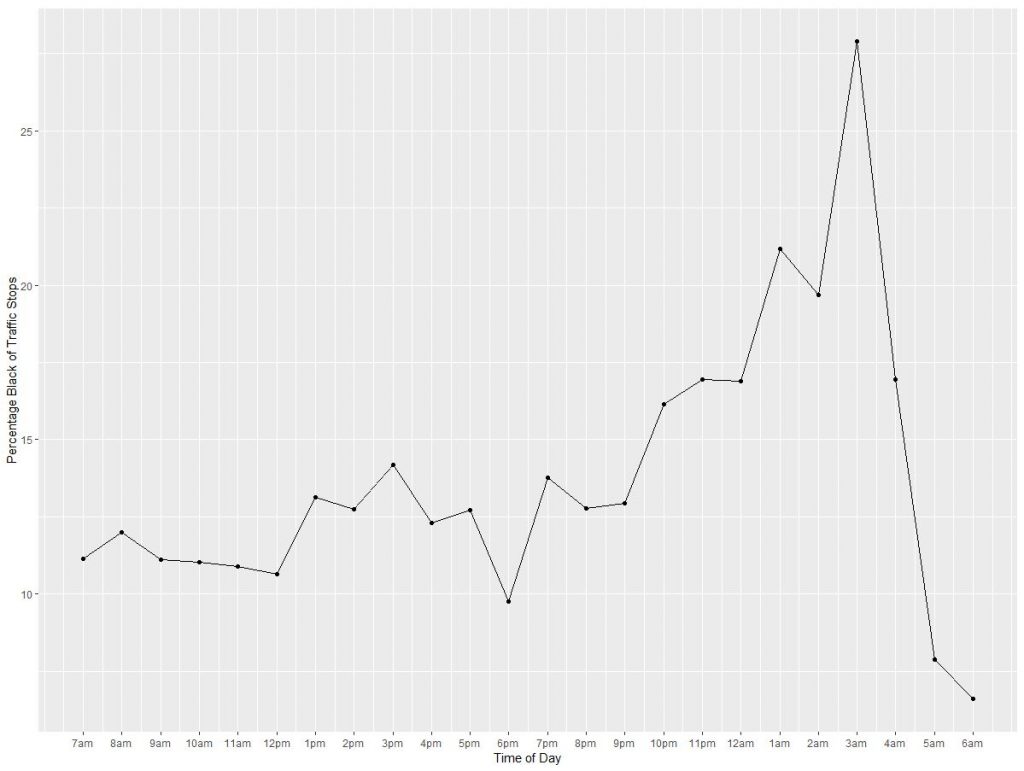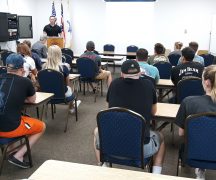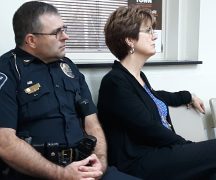We are a group of sociology professors and graduate students at BGSU who are analyzing data obtained from the BG Police Department through a public records request including records of all traffic stops in the city from January 1, 2018 through September 30, 2020. Our goal is to provide statistics that might help inform community discussions about policing so that the police and residents can work together to make Bowling Green as welcoming as possible for all.
According to reporting by BG Independent News about discussions at a recent Not In Our Town meeting, there are many Black people and other people of color living in Bowling Green who see the city as a “sundown town.” They feel unwelcome, restricted in their movements, or scared to drive the streets at night.


We examined the 18,644 traffic stop records during this time period by the hour of the day and the race of the person stopped. We calculated the percentage of stops during each hour that involved a Black person. The accompanying graph and table show that the percentage of stops involving a Black person was higher after sundown than during the daytime hours. Between the hours of 7 am and 7 pm, the percentage of stops involving a Black person was between 9.8% and 14.2%. But, from 7 pm until 4 am, the percentage jumped from 13.8% to 27.9% before dropping back down to 6.6% during the 6 am hour.
According to the US Census, the percentage of Bowling Green residents who are Black is 6.4%. The overall percentage of people stopped by BG police who are Black is 13.7%, more than twice their representation in the local population. Most importantly, after sundown, the percentage of people stopped who are Black rises to over four times their local representation.
It is not clear why Black people are overrepresented in BG traffic stops or why the percentage of stops involving Black people is so high after sundown, but we hope that these descriptive statistics can serve as the basis for discussions between the police and residents to answer these questions and explore possible ways to reduce these disparities.
Steve Demuth, Tom Mowen, Chloe Wentzlof, Cori Pryor, and Brian Klinnert




